Port Elizabeth International Airport
Port Elizabeth International Airport[3][4] (IATA: PLZ[5], ICAO: FAPE) is an airport serving Port Elizabeth, a city in the Eastern Cape province in South Africa. It was formerly known as H. F. Verwoerd Airport. The airport is owned and operated by the Airports Company South Africa which also operates nine other airports around South Africa. The airport is located approximately two miles south of the city's central business district. In 2017, the airport served 1,620,705 passengers.
Port Elizabeth International Airport | |||||||||||||||
|---|---|---|---|---|---|---|---|---|---|---|---|---|---|---|---|
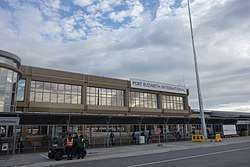 | |||||||||||||||
| Summary | |||||||||||||||
| Airport type | Public | ||||||||||||||
| Owner/Operator | Airports Company South Africa | ||||||||||||||
| Serves | Port Elizabeth, Eastern Cape, South Africa | ||||||||||||||
| Location | Walmer, Port Elizabeth, Eastern Cape, South Africa | ||||||||||||||
| Elevation AMSL | 226 ft / 68 m | ||||||||||||||
| Coordinates | 33°59′05″S 025°36′37″E | ||||||||||||||
| Website | acsa.co.za | ||||||||||||||
| Map | |||||||||||||||
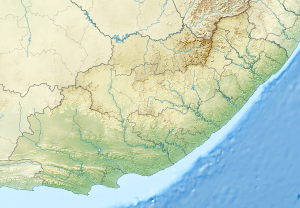 FAPE Location of the airport 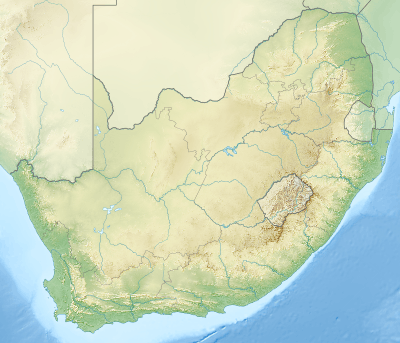 FAPE FAPE (South Africa) 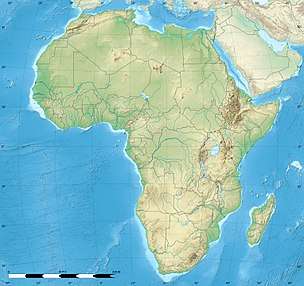 FAPE FAPE (Africa) | |||||||||||||||
| Runways | |||||||||||||||
| |||||||||||||||
| Statistics (Jan-Dec 2019) | |||||||||||||||
| |||||||||||||||
History
A highlight in Port Elizabeth's history was the first flight to Port Elizabeth from Cape Town in 1917, made by Major Allister Mackintosh Miller. At that time, this was considered a long distance flight, and it heralded the start of the civil aviation industry in Port Elizabeth. This flight and many more has been captured on canvas by Ron Belling and is on display at the Ron Belling Art Gallery.
Port Elizabeth Airport was established in 1929 in close proximity to the city. It was initially founded by Lieutenant Colonel Miller, who needed an airfield to operate his postal service between the city and Cape Town. It was only officially opened some nine years later, in 1936, boasting a single runway, one hangar and a concrete apron. However, the foundations of this infrastructure will be removed to make room for additional vehicle parking.
During World War II, the airfield was extended to accommodate 42 Air School for the Royal Air Force and 6 Squadron South African Air Force on the southern and eastern sides of the field. Commercial operations were conducted from the northern side. In 1954, it saw the landing of the first jet-propelled aircraft - five De Havilland Vampire FB9s.
Construction of the permanent terminal buildings, runways and an air traffic control building began in 1950. The commercial operation was moved to an airfield at St Albans, some 25 km from the city centre, for the construction period. The new buildings were officially opened in 1955. In 1973 the apron was extended to accommodate larger aircraft and a new departures terminal was opened in 1980. The facilities served the airport community until 2000 when plans for a major terminal upgrade were drawn.
These facilities served the community till 2000 when plans for a major terminal upgrade was drawn-up. The separate arrivals and departures buildings were consolidated into a single facility with a central retail area linking the departures with arrivals creating a light friendly atmosphere. This facility caters for domestic flights but can be screened off to operate a fully compliant International arrivals and departures section.
Facilities
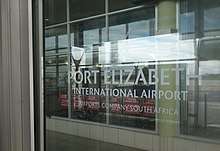
The airport resides at an elevation of 226 feet (69 m) above mean sea level.[3] It has two asphalt paved runways: 08/26 is 1,980 by 46 metres (6,496 ft × 151 ft) and 17/35 is 1,677 by 46 metres (5,502 ft × 151 ft).[3] There are also 13 aircraft parking bays on the apron and the terminal building measures 8,700 square metres (94,000 sq ft). The modern terminal upgrade was completed in June 2004 allowing the airport to handle up to 2 million passengers a year. In preparation for the 2010 FIFA World Cup runway 08/26 was going to be extended from 1,980m to 3,000m with a view to accommodating International flights, although this never happened. A number of hotels are present on or near the airport. Ground transport is provided by local taxis. The airport also has a selection of parking areas and several car rental offices, including Eurocar and Bidvest.
South African Air Force
Air Force Station Port Elizabeth is home to C Flight of 15 Squadron of the South African Air Force. It is a helicopter unit primarily tasked with maritime and landward search and rescue. There is also a branch of the South African Air Force Museum at the airport. The museum houses many historical military jets, helicopters, exhibits and paintings dating from the airport's days a World War II base to the end of apartheid.
Airlines and destinations
Passengers
| Airlines | Destinations |
|---|---|
| Airlink | Cape Town, Johannesburg–O.R. Tambo |
| British Airways | Cape Town, Durban, Johannesburg–O.R. Tambo |
| CemAir | Bloemfontein |
| FlySafair | Cape Town, Durban,[6] Johannesburg–O.R. Tambo[7] |
| Mango | Johannesburg–O.R. Tambo |
Cargo
| Airlines | Destinations |
|---|---|
| BidAir Cargo | Johannesburg-O.R. Tambo |
| Imperial Air Cargo | Johannesburg-O.R. Tambo |
| South African Airways Cargo | Cape Town, Durban, East London, Johannesburg-O.R. Tambo |
| Star Air Cargo | Johannesburg-O.R. Tambo |
Traffic statistics
| Year | Passengers | % Change |
|---|---|---|
| 2006 | 1,409,607 | |
| 2007 | 1,491,551 | |
| 2008 | 1,465,429 | |
| 2009 | 1,342,859 | |
| 2010 | 1,408,374 | |
| 2011 | 1,368,334 | |
| 2012 | 1,317,695 | |
| 2013 | 1,269,634 | |
| 2014 | 1,285,074 | |
| 2015 | 1,584,966 | |
| 2016 | 1,582,889 | |
| 2017 | 1,620,705 |
See also
References
- "ACSA – Durban Passenger Statistics". Airports Company South Africa. Archived from the original on 29 September 2011. Retrieved 6 May 2011.
- "ACSA – Durban Aircraft Statistics". Airports Company South Africa. Archived from the original on 20 July 2011. Retrieved 6 May 2011.
- "FAPE – PORT ELIZABETH INTL" (PDF). South African Civil Aviation Authority. Effective 20 December 2012. Archived from the original (PDF) on 2018-07-01. Check date values in:
|date=(help) - "Port Elizabeth International Airport". Airports Company South Africa. Archived from the original on 25 June 2013. Retrieved 17 June 2013.
- "IATA Airport Code Search (PLZ: Port Elizabeth)". International Air Transport Association. Retrieved 17 June 2013.
- "Archived copy". Archived from the original on 5 June 2017. Retrieved 2 June 2017.CS1 maint: archived copy as title (link)
- "FlySafair Adds New Domestic Routes from Dec 2014".
- "ACSA Passenger Statistics". Airports Company South Africa. Archived from the original on 29 October 2013. Retrieved 23 October 2013.
External links
![]()